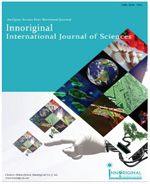REVERSE PHARMACOLOGY: A NEW APPROACH TO DRUG DEVELOPMENT
Abstract
The pharmaceutical sector has traditionally been a vibrant, innovation-driven and highly successful component of global industry. A confluence of spectacular advances in chemistry, molecular biology, genomics and chemical technology and the cognate fields of spectroscopy, chromatography and crystallography led to the discovery and development of numerous novel therapeutic agents for the treatment of a wide spectrum of diseases. To facilitate this process, scientists launched a significant and noticeable effort aimed at improving the integration of discovery technologies, chemical sourcing for route selection/delivery of active pharmaceutical ingredients. However, recent trends indicate that this model may no longer ensure high growth rates. R & D expenses have risen enormously in last decade but surprisingly it has not led to a corresponding increase in the number and efficacy of new drugs. And so numbers of approved new chemical/molecular entities are declining. The extremely time consuming, complex and capital-intensive process makes companies ‘target rich’ but ‘lead poor’.Alternatively, reverse pharmacology also known as target base drug discovery (TDD) is now becoming a popular option in the field of drug discovery where a hypothesis is first made that modulation of the activity of a specific protein target will have beneficial therapeutic effects. Screening of chemical libraries of small molecules is then used to identify compounds that bind with high affinity to the target. The hits from these screens are then used as starting points for drug discovery. This method became popular after the sequencing of the human genome which allowed rapid cloning and synthesis of large quantities of purified proteins. This method is the most widely used in drug development today.Downloads
Published
2015-03-01
How to Cite
Saxena, A. (2015). REVERSE PHARMACOLOGY: A NEW APPROACH TO DRUG DEVELOPMENT. Innoriginal: International Journal of Sciences. Retrieved from https://innoriginal.com/index.php/iijs/article/view/23
Issue
Section
REVIEW ARTICLES


